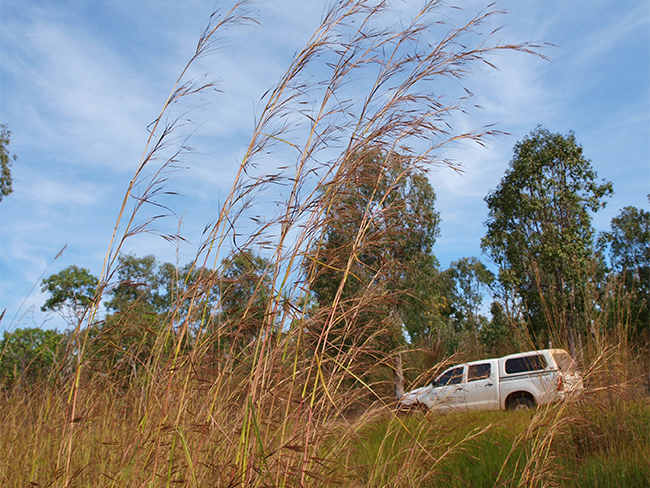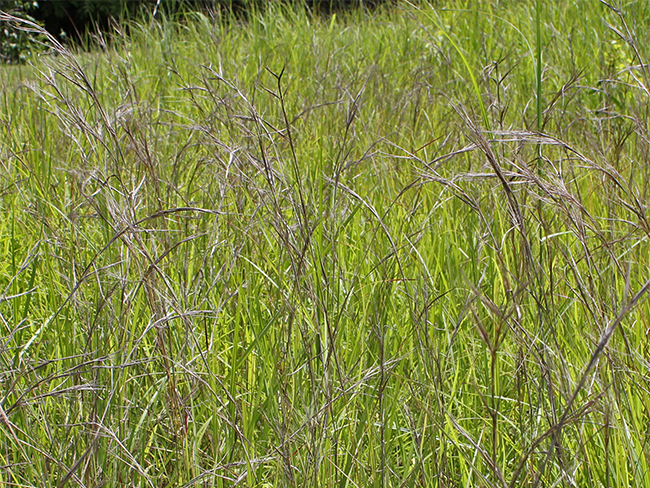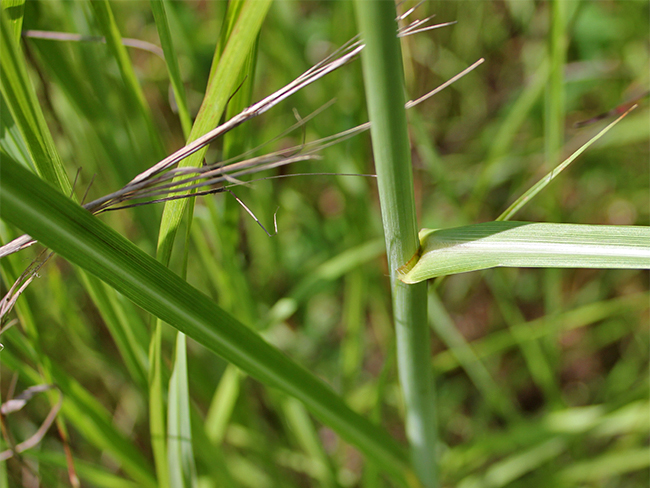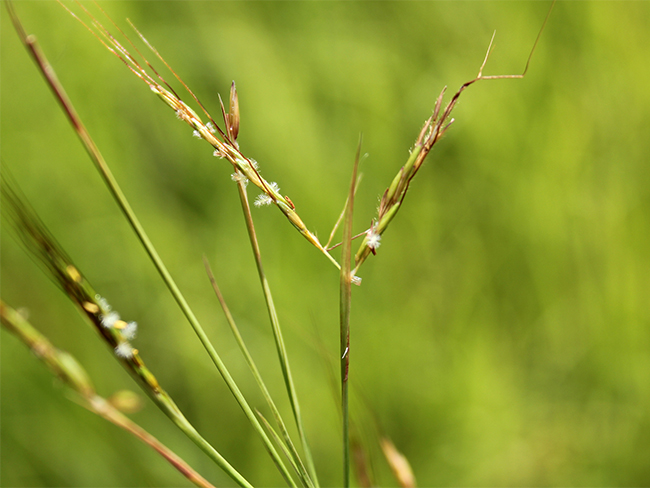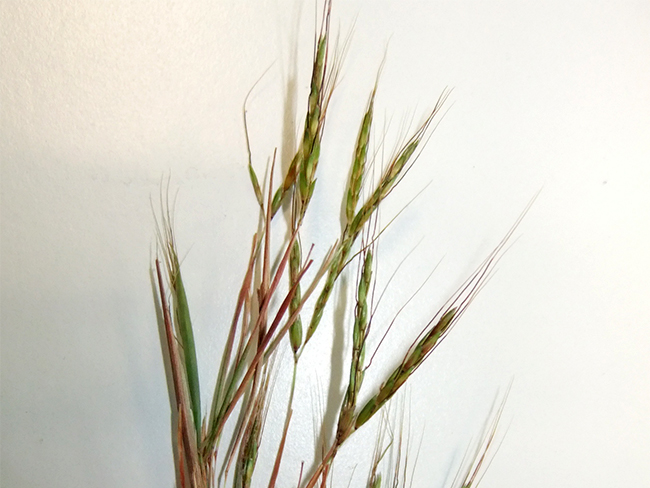Thatch grass
Scientific name: Hyparrhenia rufa
Declaration status: Class A
Thatch grass is native to Africa.
It is often grown as a pasture grass in the tropics, where it has in many cases naturalised and spread beyond the original plantings.
Thatch grass is most common in the coastal districts of central and northern Queensland.
It is restricted in the Northern Territory (NT) to a small number of locations around Darwin and other parts of the Top End, especially in areas with greater than 500mm annual rainfall.
For more information, get the thatch grass identification fact sheet PDF (846.4 KB).
Impact
Thatch grass was previously trialled in the NT as a pasture species, but is no longer recommended or used.
Thatch grass can have all of the following impacts:
- out-compete native grasses due to its higher germination potential and fast seedling growth
- well-adapted to fires
- drought tolerant and can withstand dry seasons of several months
- can survive seasonal burning and temporary flooding.
- can increase the fuel load and the intensity of fires, which encourages more thatch growth.
Identification
You should use this as a guide. There may be other plants or weeds that look similar.
- erect, densely tufted perennial grass grows to 3m tall
- mature grass can have dried tangled thatch-like tufts
- stalks are smooth and flower stalks are forked, with each branch of the fork growing to 4.4cm long
- smooth and flat leaves, grow to 60cm long and 0.8cm wide and the leaf-sheaths are wider than the blade at the collar base
- flowers are covered in rusty-brown hairs
- seed heads are tall and have brown bristles (awns) that are 2cm long with two bends.
If you are unsure, contact the Weed Management Branch.
Control
Small infestations can be hand pulled. Slashing can prevent seed formation. Regrowth can then be treated with herbicide.
Spread
After fires, thatch grass can dominate the understory replacing native vegetation, which in turn adds to the fuel load, frequency, and size of future fires.
Seeds with long bristles are capable of catching on people or animals that walk past the plant.
The seeds are able to disperse on the wind after fires and germinate well in these conditions.
Spread prevention
You can prevent the spread of thatch grass by doing all of the following:
- learn how to identify thatch grass
- map infestations to help develop a management plan
- control minor infestations, isolated outbreaks or seedlings first
- control plants before seeds mature
- designate wash down areas and actively work to prevent contamination of clean areas
- spray any plants that grow on fence lines, fire breaks and roadsides
- make sure any hay brought into clean areas for fodder or mulch is weed free.
- monitor areas that you have treated and watch for re-infestations.
Give feedback about this page.
Share this page:
URL copied!
